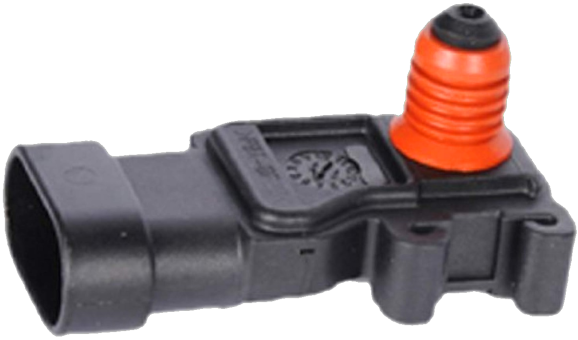The engine's computer system can make the engine more powerful, economical, and smooth if it can accommodate for changes in air pressure within the intake manifold. The MAP Sensor, or Manifold Absolute Pressure Sensor measures this vacuum or pressure by measuring its pull or push within a neutral area of the intake manifold, after the throttle body (behind this due to the pressures which change when it is closed).

Most MAP sensors on naturally aspirated can only detect low pressures, since that is all they encounter. This level is typically 1 bar.
Sometimes, when an engine is upgraded dramatically (often the case with forced induction), the original MAP Sensor needs to be upgraded too, so the higher and lower pressures can be properly detected. Typical pressure levels require 2 or 3 bar sensors, while performance builds with higher pressures go even higher.
How a MAP Sensor Works
A pressure sensor needs to turn varying pressures into a varying signal that a computer can make sense of. How most sensors do this, MAP sensors included, is by allowing the pressure to push on a piezoelectric crystal. This produces a voltage, and the greater the push (from a greater pressure), the higher the voltage. Since these crystals produce a reliable output voltage based on the amount of pressure, the computer can interpret a specific voltage as a specific pressure.
